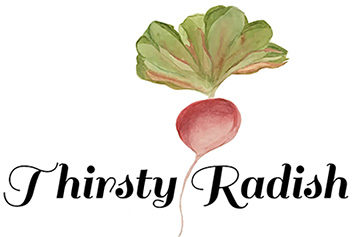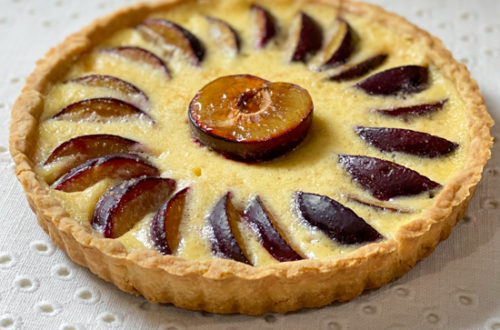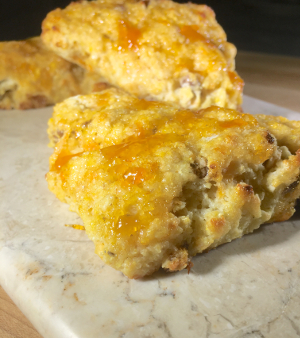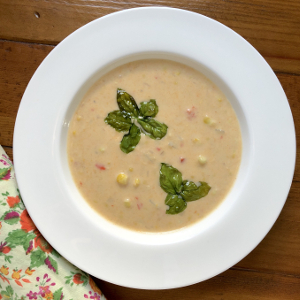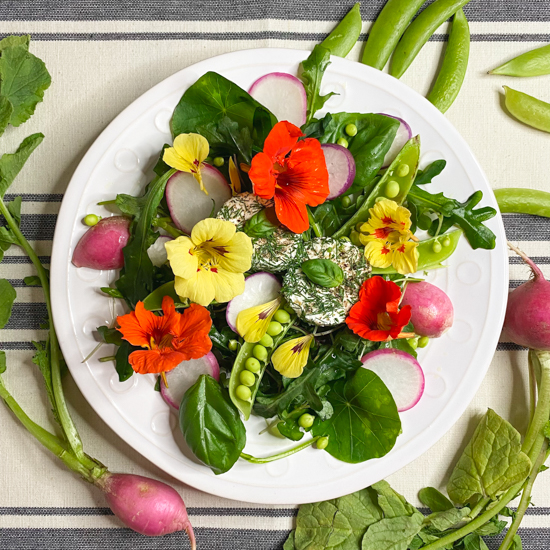
Cooking with Edible Flowers
The nasturtiums I have been tending finally burst into mildly sweet and lightly peppery blooms. For weeks I watched their leaves pop up like parasols in my edible flower patch, sometimes shading the yellow and deep orange buds about to emerge. Throughout the spring they formed a showy display of green, the kind that makes you want to take them right into the kitchen, which now I have along with the cheerful flowers.
Nasturtiums bloom profusely once they are on a roll, meaning that my salads, pasta, and plant-forward recipes will feature the gorgeous colors for weeks to come. While edible flowers each have their own culinary charms, these lend a delicate sweetness with a bite reminiscent of watercress, arugula, and mustard microgreens.
From the orchid cream nasturtium, with its crimson markings, to the blotch pansy, edible flowers brighten dishes and add delicate patterns distinct from the vegetables and grains with which they are paired. While I planted the seeds intending to add flavor to summer dishes, I was waiting for the gorgeous colors as well, hoping each seed carefully filed and pressed into the soil would do well in its new home and yield the variety of blooms promised on my seed packet. Despite an unanticipated cold patch early in the season and the oppressive heat of late, the plants thrived, and on Sunday morning, I picked the first flowers.
While tending to the nasturtiums, I found this little one at work in my pollinator garden. Enjoy the video (turn on the audio for some music) and the salad recipe below as well as tips on how to consume edible flowers safely.
View this post on Instagram
Edible Nasturtium Salad
With the mild peppery flavor of the flowers and greens in the pictured salad, a lightly sweet vinaigrette works well. Additional greens in the form of herbs coat the goat cheese rounds. Here is the full method I used to make the salad:
Mix a salad base, such as the arugula, microgreens, and home-grown basil in my version.
Toss greens with a delicately sweet vinaigrette such as champagne, white wine, or even peach, and divide among plates.
Cut rounds of goat cheese and roll in chopped fresh herbs such as dill and chives as well as freshly cracked black pepper. Top greens with the rounds.
Slice radishes, sugar snap peas, and/or your favorite crunchy summer vegetable and intersperse.
Scatter a handful of nasturtium blooms and leaves (see preparation and safety tips below).
Drizzle with more vinaigrette.
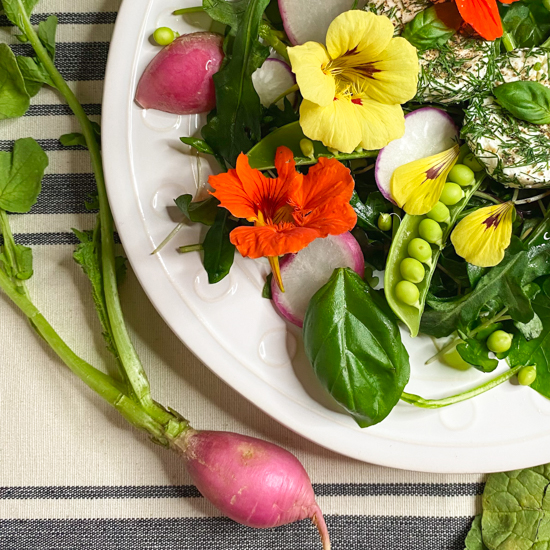
Consume Edible Flowers Safely
Check to make sure a flower is edible before cooking with it. While nasturtiums, pansies, violets, borage, and many others can be used in cooking, some flowers can only be consumed in part, for instance the petals and not the leaves.
If you have allergies to flowers and/or pollen, ask your doctor about safety. While a specific flower may be technically safe for consumption, it may not be a good choice based on your specific allergies.
Always choose edible flowers grown organically without pesticides. If you find farm-grown flowers at the market, look for labeling that indicates they are safe to eat. For the safest growing environment and freshest blooms, try adding a few varieties to your home garden. As with herbs, their flavor is best when snipped right before use so keep an eye on buds about to show their gorgeous petals, which are the parts we want for our dishes.
Even if flowers have been grown without pesticides, thoroughly wash them, then remove stamens and pistils. Follow any safety instructions for the variety with which you’ll be cooking and use only the edible parts.
For more salad inspiration, try this arugula salad with grilled nectarines or my Greek-yogurt based Caesar dressing.


